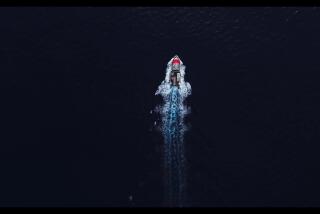TV Review : National Geographic Relives Hunt for the Bismarck
- Share via
Hunting down a deep-sea shipwreck is wonderful, but re-living the events that led to the ship’s demise is profoundly humbling. That’s the unavoidable reaction to the newest entry in the “National Geographic Explorer” series, “Search for Battleship Bismarck” (Sunday at 6 p.m. on TBS cable).
Shipwrecks, as stark representations of the hazard of existence, continue to hold a powerful place in the imagination. Robert Ballard, the mild-mannered aquatic adventurer who discovered the Titanic, makes a specialty of searching for huge ships that have eluded the eyes of others. He is clearly not a treasure hunter, but an archaeologist using tools refined by Jacques Cousteau, such as a remote control submarine that can drop to a depth of 16,000 feet.
In the interest of drama, one presumes, the search is stretched out with narrative bits like, “Ballard had found something . . . but was it the Bismarck?” We know he’ll find the ship; what we might not have known was how the ship sank in the first place.
Like the Titanic, the Bismarck was thought to be unsinkable, the crowning example of German engineering and Nazi might. Let loose on the Atlantic, it would dwarf the destruction wrought by German U-boats in World War I.
Only England, beseiged but still free, could confront the behemoth, and how it did is a chilling story of both war’s absurdity and disturbing beauty. As survivors vividly recall the final battle, this particular “National Geographic” armchair journey takes on the quality of a Joseph Conrad novel. As it turns out, the closing credits reveal that a book has been written about the few, fiery days of the ship: “Pursuit: The Chase and Sinking of the Bismarck” by Ludovic Kennedy.
More to Read
The complete guide to home viewing
Get Screen Gab for everything about the TV shows and streaming movies everyone’s talking about.
You may occasionally receive promotional content from the Los Angeles Times.






